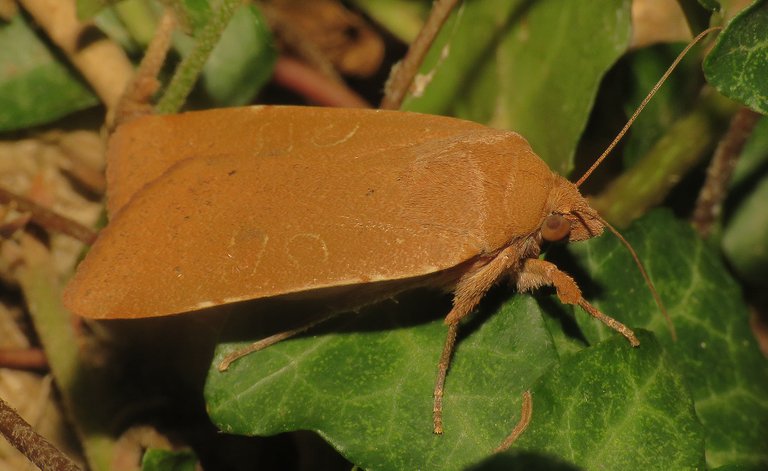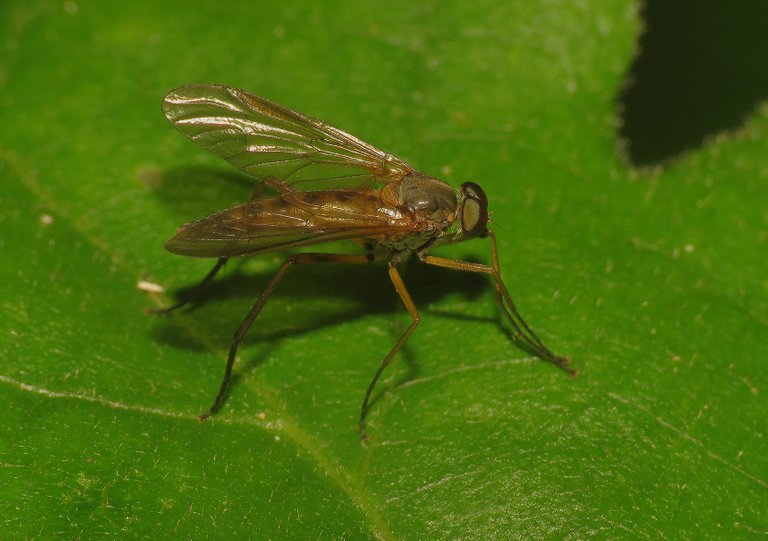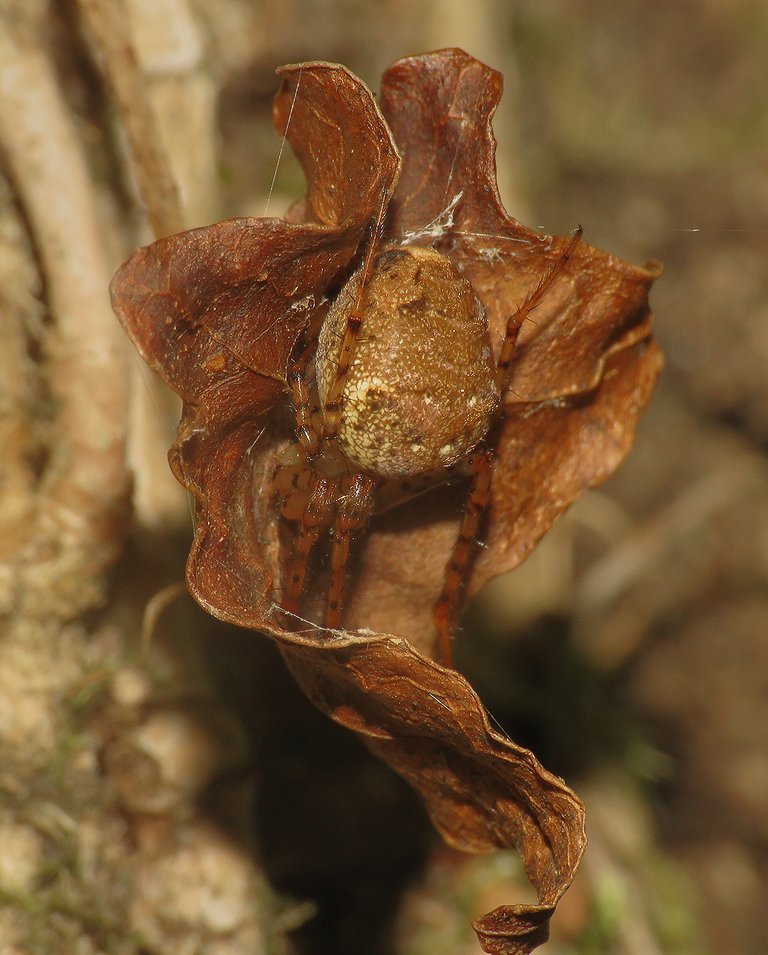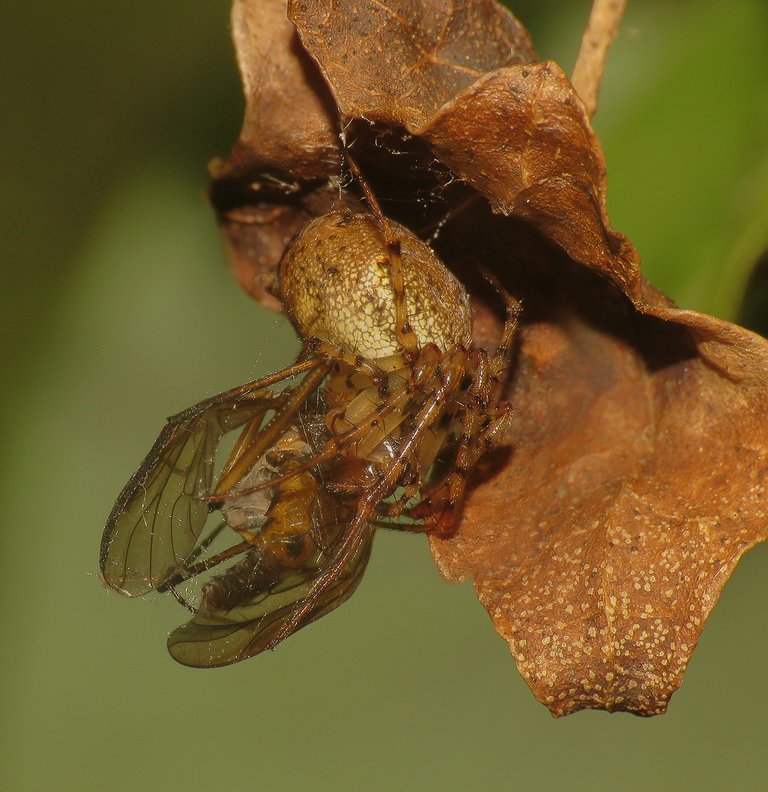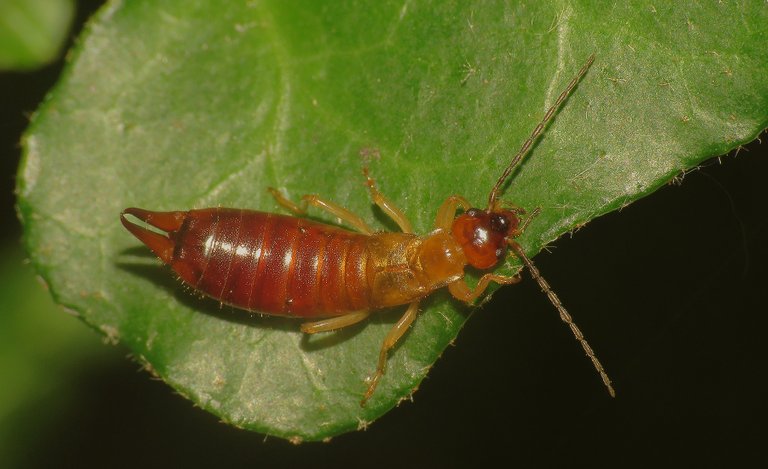I spent some time in the woods. No, not today. A couple of days ago.
Although the day ended up being very hot, the early morning when the photographs you'll see here were taken, was surprisingly fresh and pleasant.
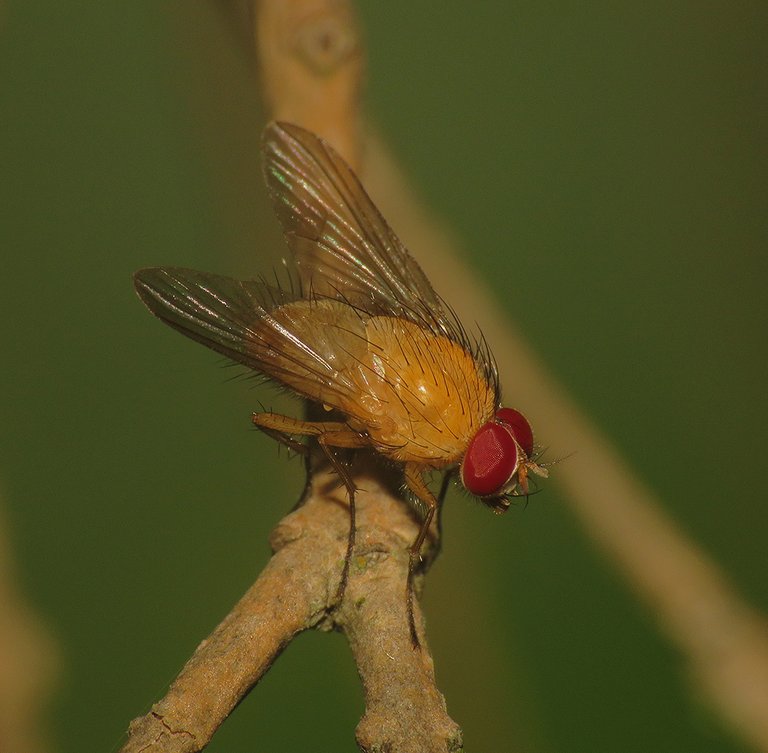
Especially under the oak trees in the wooded, rural area around the small town that goes by the name of Svetvinchenat, about forty kilometers from where I live.
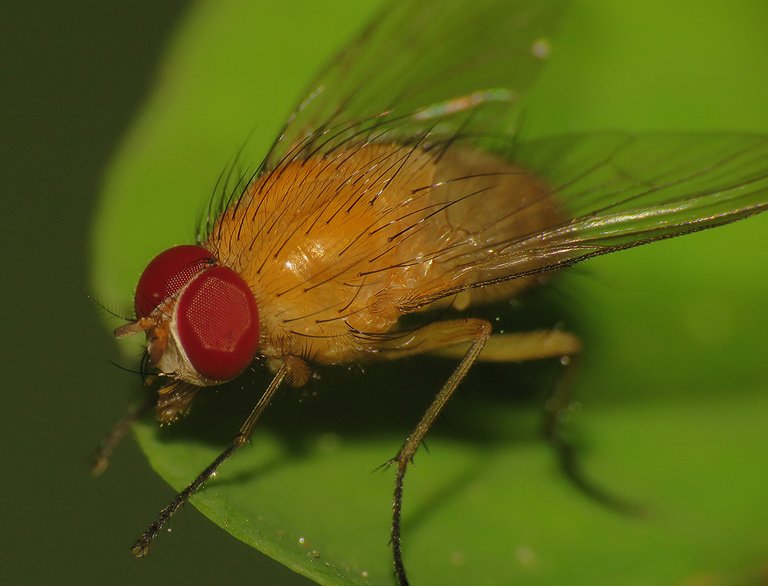
A fly was the first insect I encountered there.
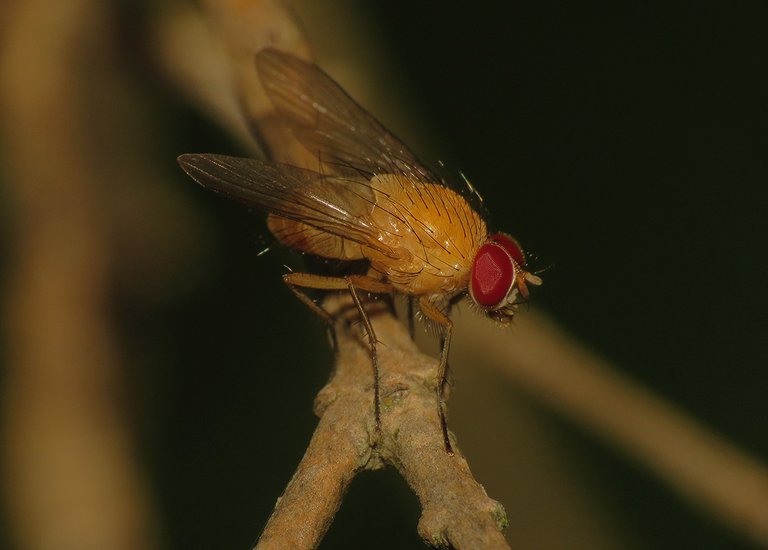
This is the Phaonia pallida, a species from the Muscidae family that lives in areas with deciduous woods and meadows. Adults feed on nectar and the young larvae feed & develop in various fungi or in the rotten wood. As the larvae grow their diet changes. The last larval instar of Phaonia pallida feeds on small insects. Here, in this first set of photographs in the post, you can see the adult male. Males have considerably bigger eyes.
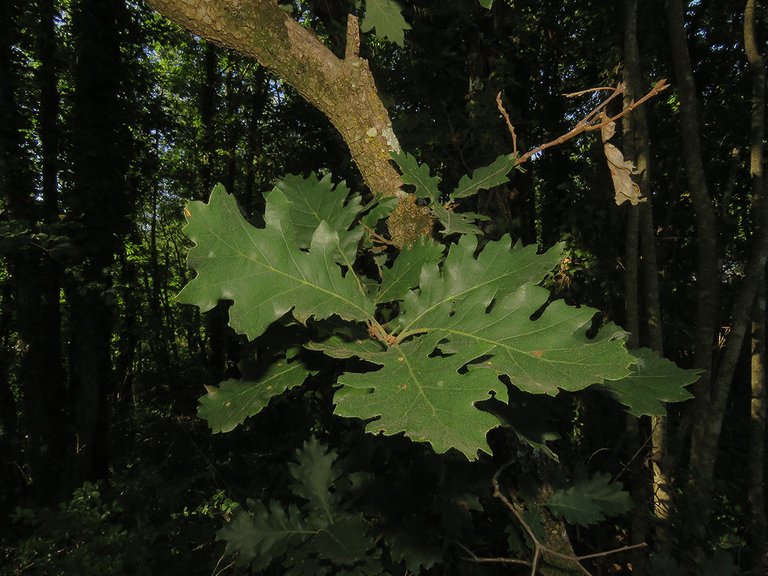
Here you can take a look at the leaves of the Quercus pubescens, the type of oak that prevails in the woods of this area.
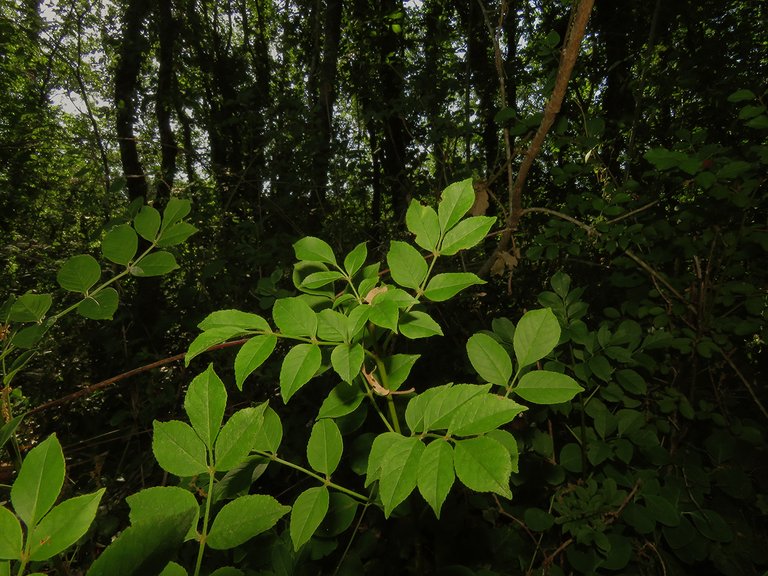
In the foreground of this photograph, you can see the branches of the young Elder tree (Sambucus nigra) that looked like a shrub.
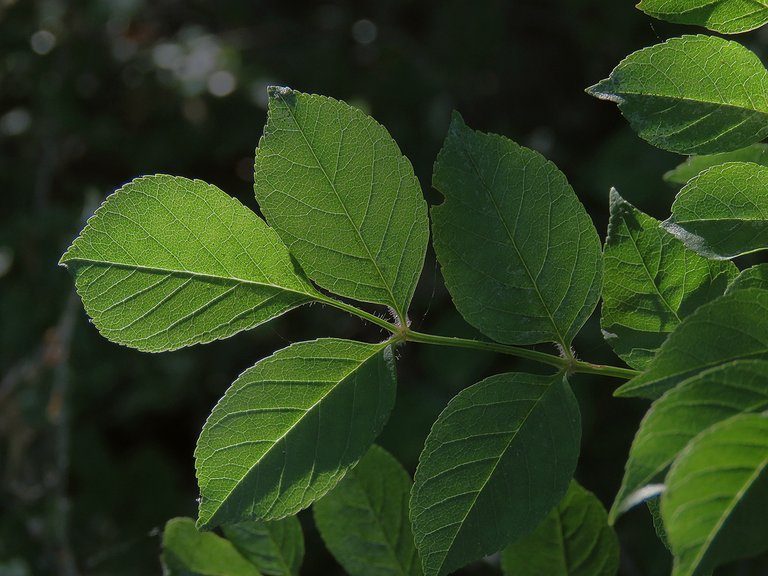
As the sun was rising ...
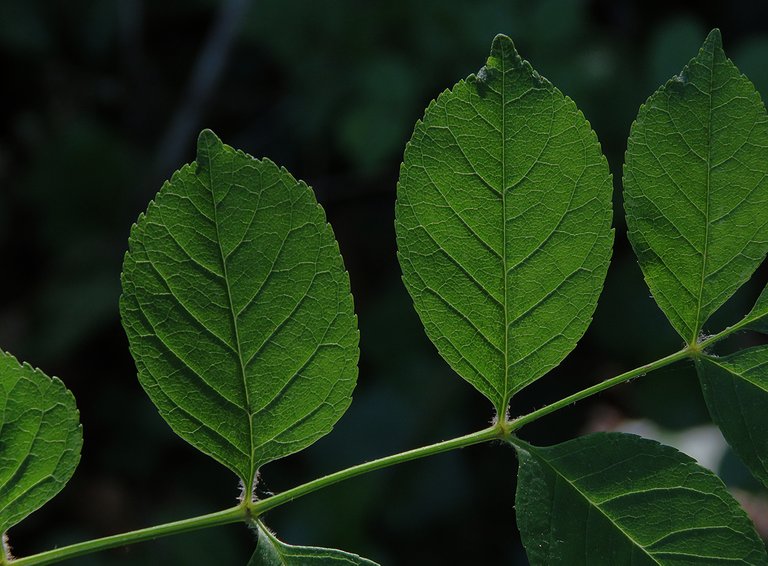
... the leaves became translucent for a minute or two.
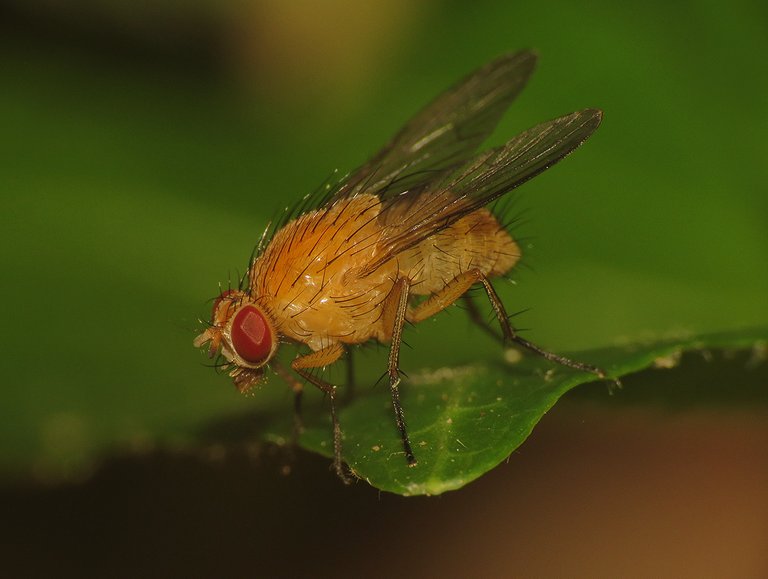
Soon I encountered another Phaonia pallida. A female this time.
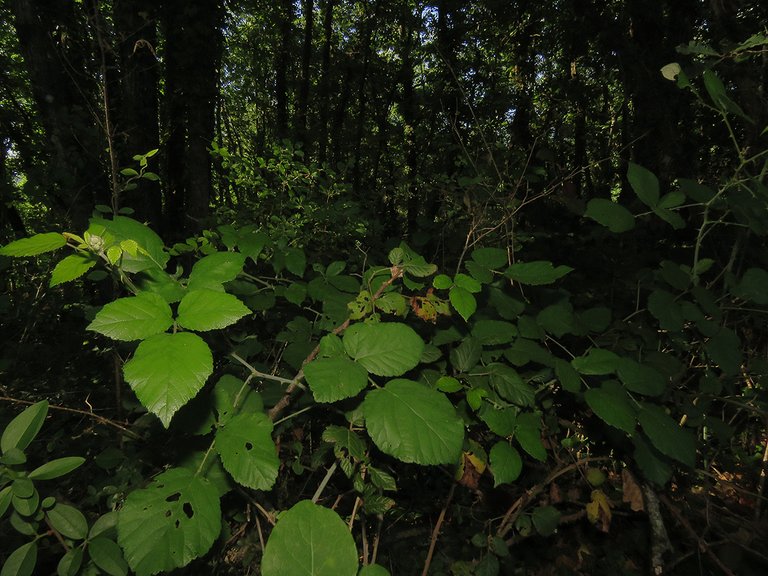
On the edge of the forest, the trees were surrounded by thorny and slightly annoying blackberry shrubs.
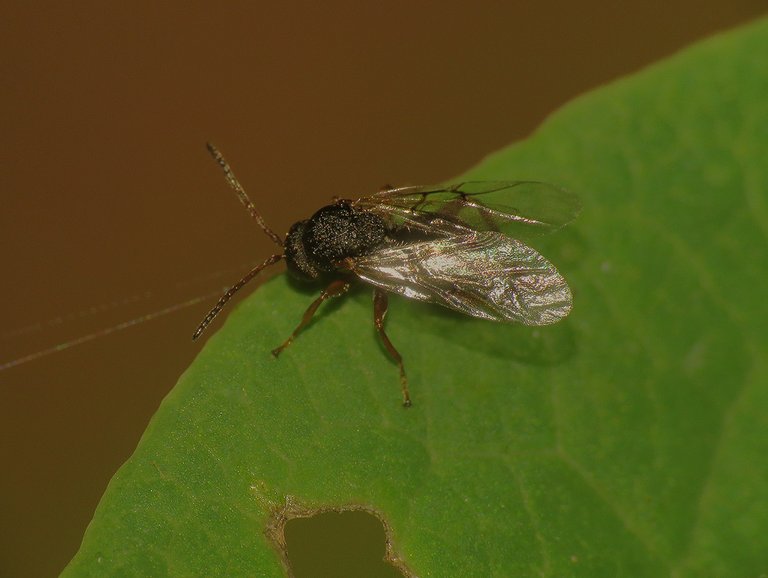
I found this minuscule insect on some herbaceous plant that grew in the shade under those shrubs. Can't tell you what exactly this is. It looks like a parasitic wasp or a sawfly.
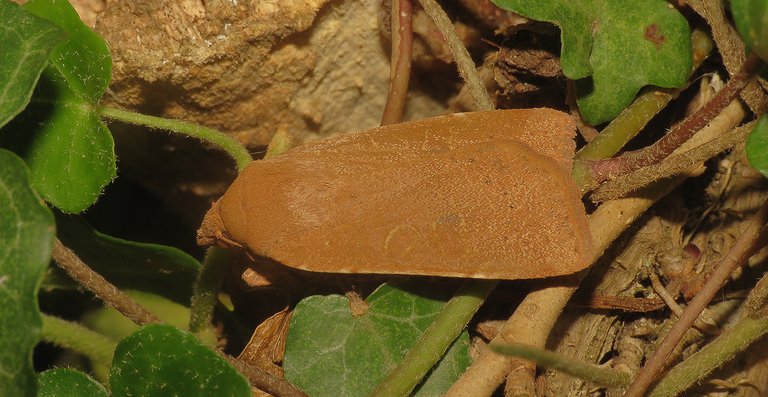
The ground and the rotting stumps were covered with ivy. This well-camouflaged moth ...
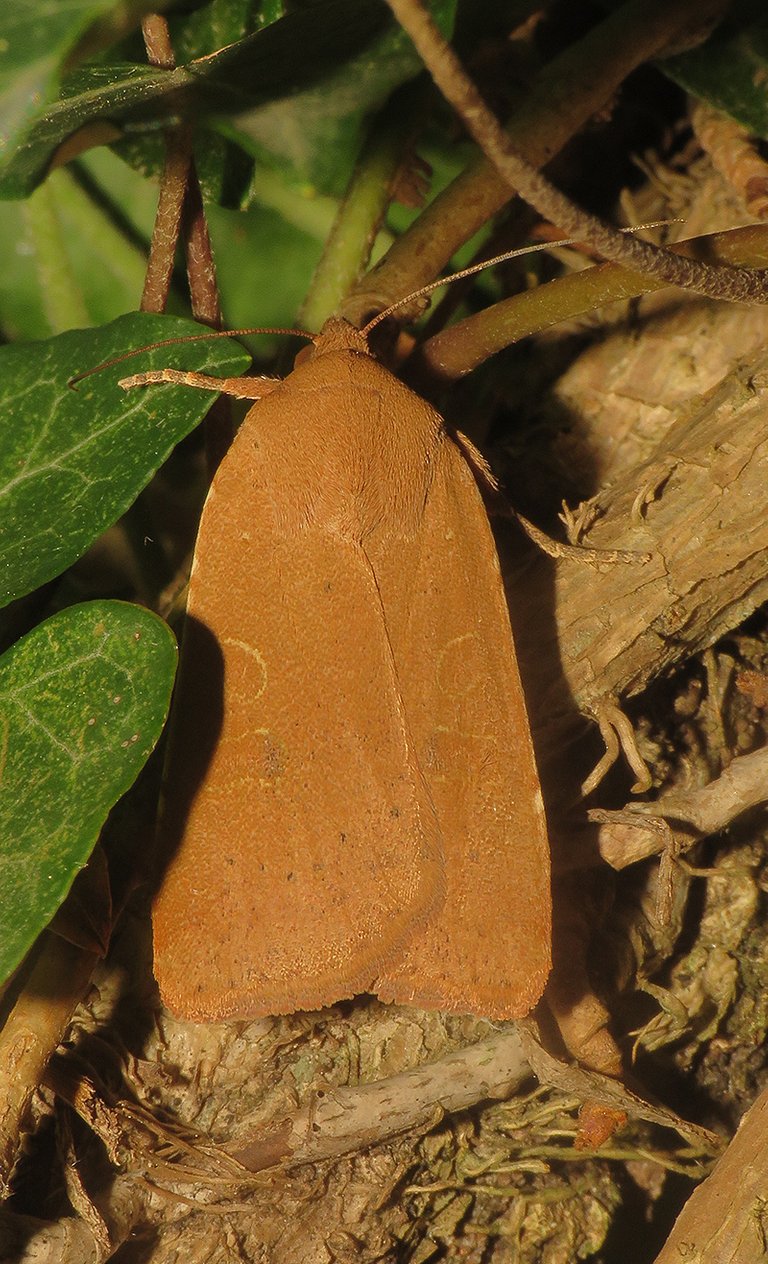
... was hiding under the leaves of that creeping plant.

The moth was easy to photograph, but finding him wasn't easy.
Can't tell you the exact species but the family is definitively Noctuidae.
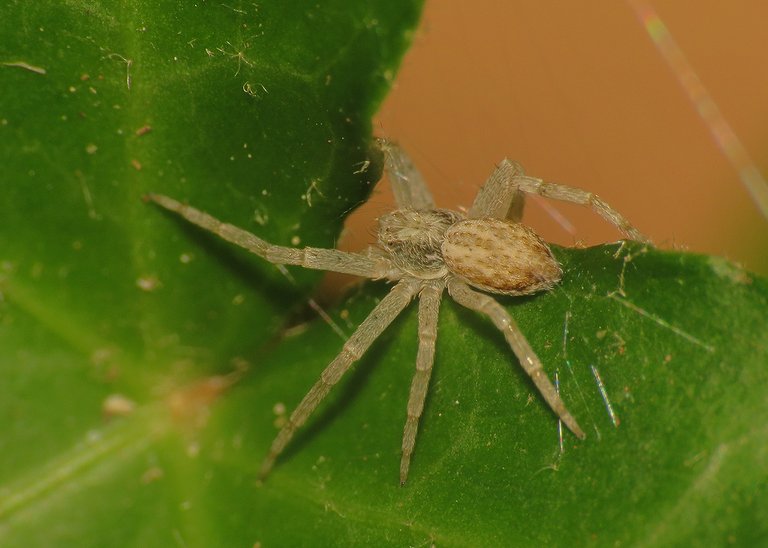
This minuscule spider was photographed on the leaf of ivy, on the ground not far from there.
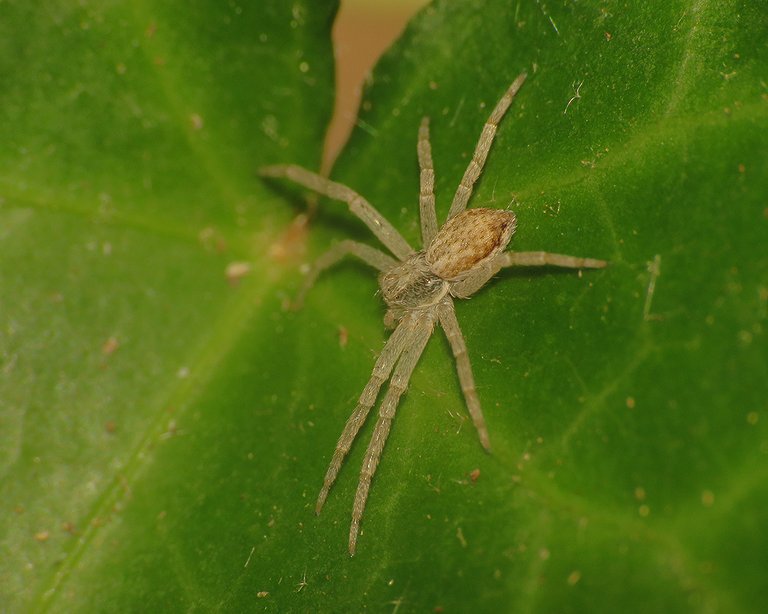
This is the juvenile Philodromus dispar.
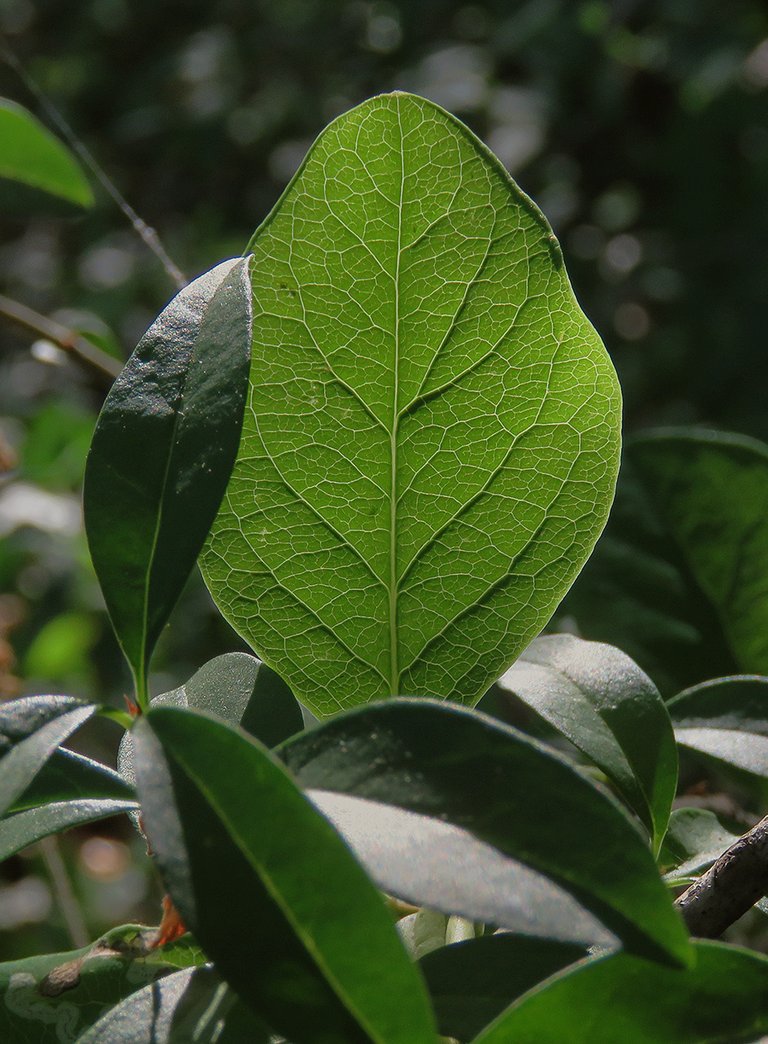
Here you can take another look at the foliage of the shrubs under the trees.
On one of those leaves, I photographed a fly from the Rhagionidae family. The Rhagio tringarius.

Here you can see a spider well-camouflaged on the fallen leaf.
The leaf was hanging on the threads under the ivy that grew around the trunk of the oak tree. About twenty centimeters above that brown leaf that looked like some kind of nest, there was a relatively large web. In the following photograph ...
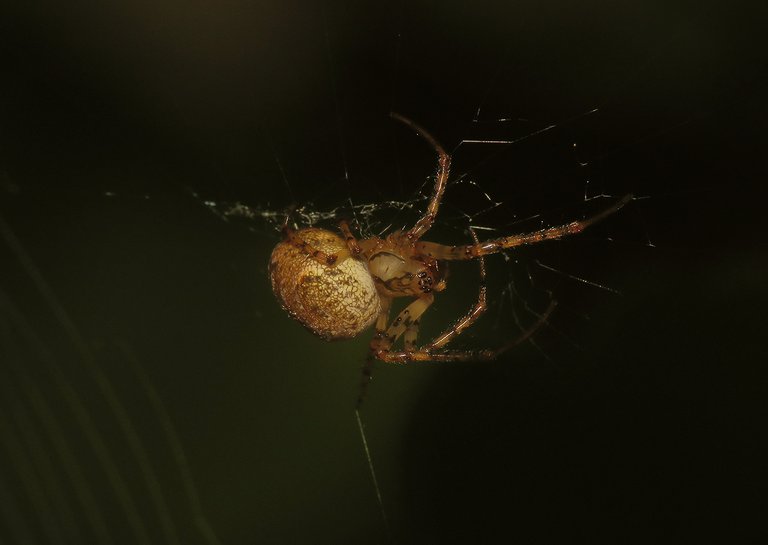
... you can see the same spider crawling on that web. The spider was in hurry ...
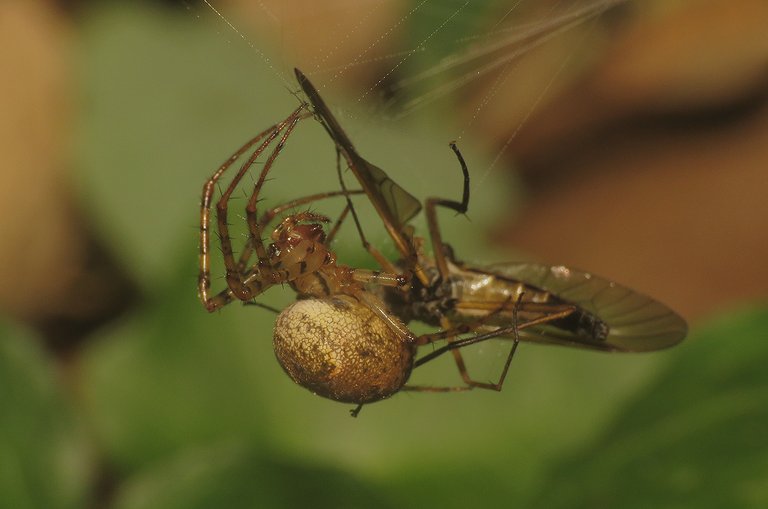
... because a Rhagio tringarius fly ended up caught by the sticky threads.
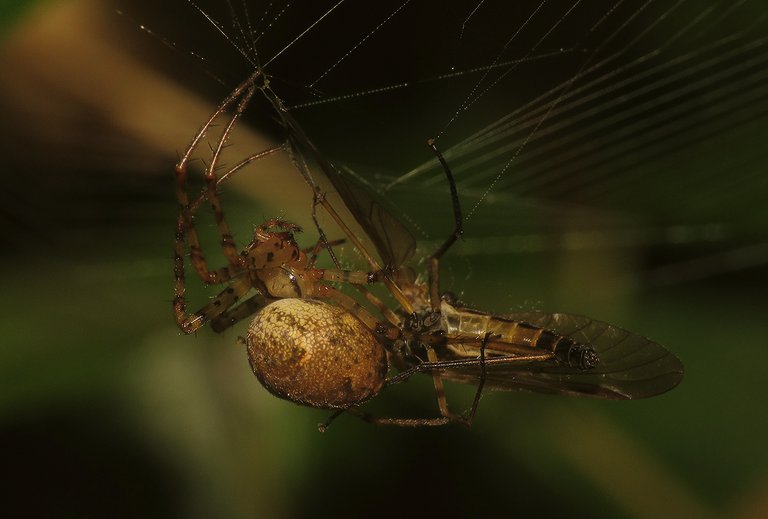
After biting and enveloping the fly with a bit of silk ...
... the spider brought its prey to the dry leaf under the web where he continued feeding hidden from predators. Metellina merianae is the name of this species from the Tetragnathidae family.

This small unidentified object was photographed on the horizontal web a meter or two further.

A small spider soon appeared from somewhere. It must have been hidden in the surrounding foliage.
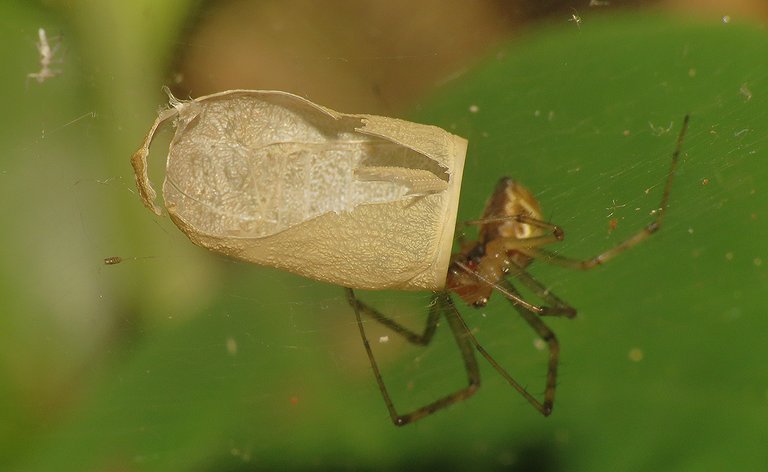
This is the Linyphia triangularis ...
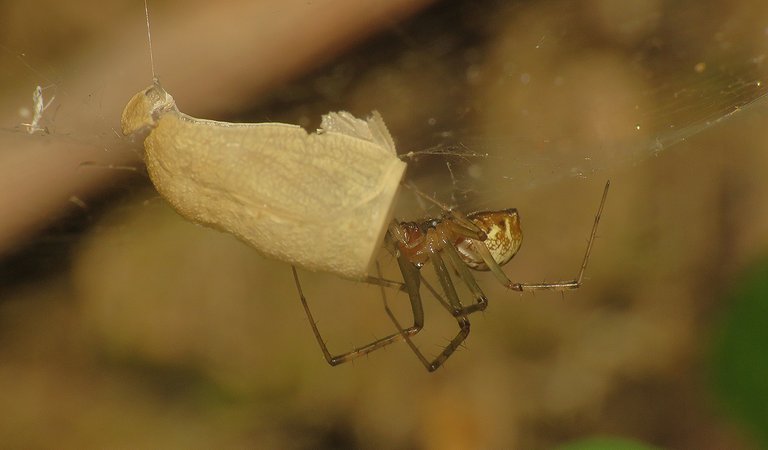
... a species from the Linyphiidae family. Spiders from this family are commonly known as sheet weavers. Their horizontal webs look a bit like sheets spread in between twigs.
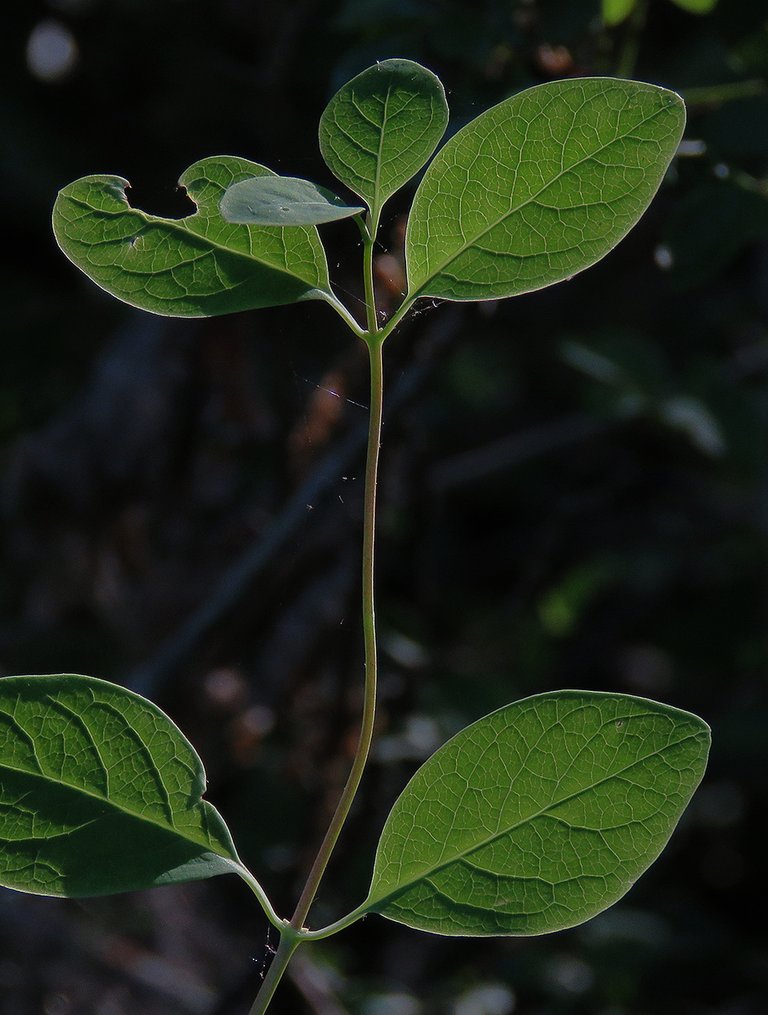
Here you can take a look at one of the twigs in that area. Can't tell you what plant is this.

Here you can see a small cockroach from the Ectobiidae family.
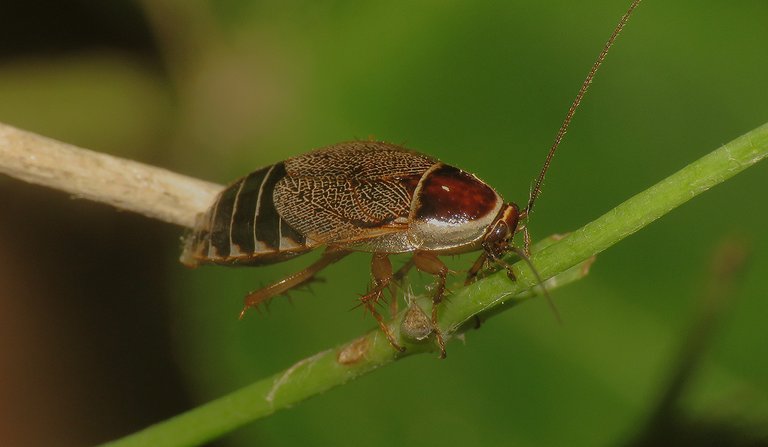
The Ectobius sylvestris. This is the female. The wings of the males are considerably longer and cover the whole abdomen.
A young, not completely developed Forficula auricularia earwig was resting on the leaf of ivy not far from there.
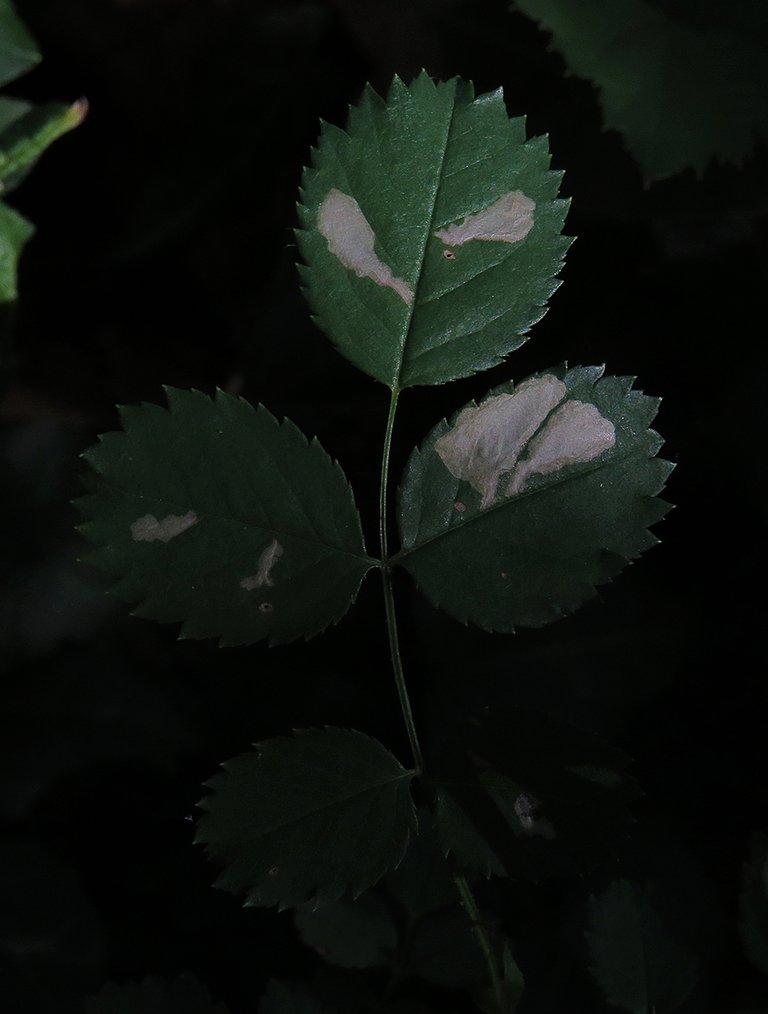
Here you can take a look at the leaves of some plant that I wasn't able to identify. The white markings are the sign that something was feeding on those leaves.
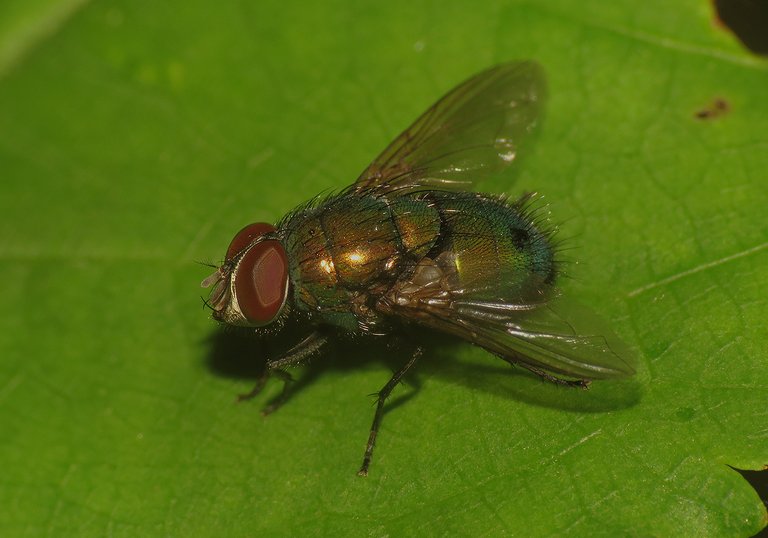
I took only one more photograph before returning to my car parked by the side of the road. Here you can see some shiny fly from the Calliphoridae family.
The following links will take you to the sites with more information about the protagonists of this post. I found some stuff about them there.
https://arthropodafotos.de/dbsp.php?lang=eng&sc=1&ta=t_37_bla_0_ect&sci=Ectobius&scisp=sylvestris
https://www.leps.it/
https://en.wikipedia.org/wiki/List_of_Diptera_families
https://www.inaturalist.org/check_lists/1541524-Spiders-of-Croatia?page=1
https://www.inaturalist.org/taxa/437909-Metellina-merianae
AND THAT'S IT. AS ALWAYS IN THESE POSTS ON HIVE, THE PHOTOGRAPHS ARE MY WORK.

